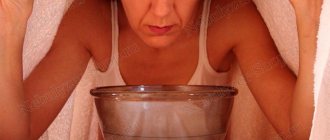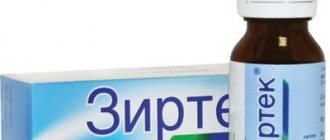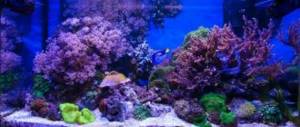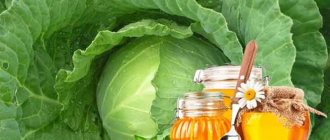How to make your own for the ears/nose
Turundas for the nose and ear are made using the same methods, but larger ones will be needed for the nose. The main thing is to follow the rules on how to make a turunda in the ear and nose. It is better to prepare turuntulas in advance, store the preparations in a separate plastic box, and use them when the need arises.
From cotton wool
Lightly fluff a piece of cotton wool of the required size, pull it out, and from the middle, twist the roller to a length of 10–12 cm. The diameter should be no more than 2 mm. Bend this tourniquet in the middle and twist the two halves together.
The result is a reliable cotton turunda, elastic, but not hard. It does not injure the ear canal or nasal mucosa. At the same time, the product is dense and will not bend. Its optimal thickness is 3–5 mm.
It's also easy to make correctly using a toothpick. Cotton is wound onto one end, and so on along the entire length. When the flagellum is ready, it is removed from the base, twisting it a little more to improve density.
From disk
A pad made from a cotton pad will turn out to be quite dense. For this reason, it is more convenient to use. In addition, it is easier to do this way compared to ordinary cotton wool. The disc hardly fluffs up; it can be rolled into a more neat strip. This flagellum is more convenient for cleaning the ears and nose of newborn babies. There are two ways to make turundas from cotton pads yourself:
- flagella;
- small bags.
To obtain a bag, the disk is divided into two halves, that is, into 2 circles in thickness. Each is cut into 2 semicircles. The disk ultimately produces 4 blanks. Each one is rolled into a tight little bag.
To obtain a flagellum, the disk is also divided in half in thickness and rolled to the required diameter. The turunda will be even denser if you fold the tourniquet in half again and then twist it.
From bandage or gauze
To make a gauze turunda and a flagellum from a bandage, you first need to cut out a part of a suitable size: width - no more than 1 cm, length approximately 12-14 cm. Fold the edges of the resulting strip inward, there should be no protruding threads that could remain in the nose or ear.
Take the strip by both ends, twist it, then bend it in half, twist it again.
At the stage of organizing the treatment of inflammatory processes in the ears, especially in children, you need to carefully study the question of how to properly make turundas in the ears.
You need to make a thin flagellum from gauze. This is easy if you roll a narrow strip of material up to 5 mm wide several times. The final length will be no more than 6 cm.
Turundas for the nose: how to make? Made from cotton wool and bandage. With Levomekol
In the practice of ENT diseases, various types of treatment are used. One of the conservative methods is to insert tampons soaked in medicines and folk remedies into the nasal cavity.
Let's learn how to make nose turundas and apply them at home. What are they made of? For what diseases is it used? Can I use it if I have a runny nose? Below we will answer all the questions.
What are turundas and what are they like?
Turunda (synonym for lint, flagellum) is a small, tightly rolled tampon made of gauze or cotton wool. They are intended for cleansing and treating the nasal cavity, ear or purulent wound.
You can make flagella yourself at home. Practical mothers prepare them in advance and store them in a closed container to use when necessary. Products for the nasal cavity are made a little thicker and denser than for the ear.
Cotton pads in the nose
Lints for home use for children are prepared from cotton wool. They are soft and do not rub mucous membranes. When buying at a pharmacy, pay attention to the fact that the cotton wool is 100% natural and not artificial.
We explain step by step how to prepare a product from cotton wool:
- Loosen a small piece of cotton wool and stretch it into a small strip.
- Starting from the center, roll up an elastic thin dense flagellum 2 mm thick, bringing it to a length of 12 cm.
- Fold in half and twist the ends together. Finished lint should not be thicker than 4 mm.
Products for children can be made from ready-made pharmacy cotton pads. Manufacturing sequence:
- Divide the cotton pad into 2 layers.
- We tear it in half.
- Wet it with saline solution.
- Twist it between your fingers until you get a flagellum.
- We compact and form the tip.
Cotton lints can be injected without fear that they will injure the mucous membrane or bend.
Turundas for a newborn can also be made using a match. To do this, tightly twist a piece of cotton wool onto a match or toothpick, then remove it.
If necessary, we compact it additionally. Such a flagellum turns out to be elastic, capable of cleaning the child’s nasal passages well.
Bandage turundas
Nasal swabs are prepared from a bandage 5 cm wide and 30-40 cm long. To do this, lay out a piece on the table and fold it like this:
- Fold the ends of the bandage 1–1.5 cm.
- The connection of the sides should be in the middle. Iron the fabric by running it along the edge of the table.
- Fold lengthwise again so that the ends of the connection are inside the bandage. Iron again to secure.
- We wrap the resulting strip around 2-3 fingers of the left hand. Tuck the remaining end inside the resulting ring and remove it from your hand.
Such long tampons are used to treat sinusitis with medication.
Gauze turundas for small children
Flagella for a child are prepared from a sterile bandage 5 cm wide. To do this, cut a strip 12–15 cm long and 1 cm wide. We make a turunda as follows:
- bend the ends of the strip inward so that the protruding threads do not irritate the nasal mucosa;
- we twist flagella from opposite ends;
- fold in half and intertwine.
Mothers use these tampons to clean their babies' nasal passages.
Method of application
Recommendation on how to insert a turunda into the nose:
- Give the seated person's head an elevated position.
- Place a paper towel under the front neckline of the garment.
- Moisten the product with the prepared substance and insert it into the nasal cavity with a rotational movement.
The tampon is left in place for 1–2 minutes to half an hour, depending on the purpose of use.
Turunda in the nose for sinusitis
Sinusitis is an inflammation of the mucous membrane of the maxillary sinuses. They are located in the upper jaw on both sides of the nose. The disease is caused by bacteria and viruses.
The cause is a deviated nasal septum, allergic diseases or chronic infection in the nasopharynx - adenoids, tonsillitis, dental caries.
Typically, sinusitis begins after a viral infection in the legs, prolonged rhinitis, or allergic pathologies.
In the acute stage, local treatment is used using a flagellum with medicinal substances. For this purpose, pharmaceutical and folk remedies are used. Before the procedure, the nasal cavity is washed with warm water or saline.
With honey
the mixture is prepared from the following ingredients:
- squeeze juice from aloe leaves;
- get onion juice;
- honey;
- Vishnevsky ointment.
mix the components in equal proportions and insert the moistened swab into the nasal passages, leave for 30 minutes, then remove.
The product is used daily for 2 weeks. this composition is effective at the onset of the disease. but you should remember that this recipe with honey is not suitable for people with allergic reactions.
with ichthyol ointment
The drug ichthyol has bactericidal and drainage properties. In addition, it relieves itching in the nose. ointment is used for chronic inflammation of the maxillary sinus.
a cotton swab or gauze flagellum is lubricated with ichthyol ointment and inserted into the nasal passage, and after 6 minutes it is removed. course of treatment is 1–2 weeks.
with laundry soap
This recipe can only be used at the onset of the disease or mild symptoms of exacerbation. Laundry soap contains alkali, rosin, fatty acids, vitamins D and E.
all components have a disinfecting effect on mucous membranes. To prepare the mixture, first prepare a solution in a water bath. To do this, I mix in equal proportions:
- grated soap;
- milk;
- alcohol;
- honey;
- vegetable oil.
After heating in a water bath, a homogeneous mass is obtained. moisten a cotton swab with the cooled mixture and insert it into the nasal passages for 6 minutes. The procedure takes 2 weeks. the composition of the ointment has draining properties.
important! For sinusitis, use long cotton swabs so that they can be easily removed.
turundas in the nose for a runny nose
Tampons for a runny nose are used solely for the purpose of cleansing the nasal passages. In this case, a long cotton wool flagellum is used so that there are no problems with its removal.
To get rid of dried crusts, first instill 1-2 drops of Aqua Maris moisturizer. Instead, use a pharmaceutical saline solution.
After moistening, the flagellum is moistened with warm boiled water and inserted into the nasal passage with screwing movements. How long to keep a tampon? – Leave it for 1-2 minutes and take it out.
Some people with a runny nose use turundas with Adrenaline to relieve congestion. This method can be classified as dangerous self-medication.
The tampon absorbs a large dose of Adrenaline, which is then absorbed by the nasal mucosa and enters the brain.
In addition, the vasoconstrictor effect of Adrenaline is short-acting, and it does not eliminate the cause of the disease. Doctors sometimes use a tampon with Adrenaline only to stop nosebleeds.
For a runny nose, a vasoconstrictor is selected, taking into account the cause of the disease and contraindications.
The use of antibiotics in the nose, including Synthomycin ointment, has nothing to do with modern civilized medicine.
Using any ointments for a runny nose, you literally drive the infection deep into the upper nasal passages, and from there into the maxillary sinuses.
Important! Bactericidal agents for the common cold are effective only in drops and sprays, but not in ointments. And a specialist prescribes them based on the cause of the runny nose.
Rhinoplasty
Rhinoplasty is the correction of an acquired or congenital deformity of the nose. Surgical intervention is performed for curvature of the nasal septum after injury, as well as for cosmetic purposes to correct the shape of the nose.
On the day of surgery, surgeons insert special silicone splints or cotton swabs into the nose.
The doctor removes the tampons 3–5 days after surgery. You cannot remove them yourself. On the eighth day after rhinoplasty, nasal rinsing begins to remove mucus and blood clots.
Tampons with medicinal and folk remedies are used for sinusitis at home after discussion with a doctor. After all, the drug must act on the cause of the disease.
In addition, any product can cause an allergic reaction. If you have a severe runny nose, see an ENT doctor. After finding out the cause, he will prescribe adequate treatment.
For the treatment of ear infections
With the development of external otitis media, doctors prescribe the use of special ear drops. It is more convenient to carry out instillation using turundas.
Before the procedure, the medicine must be warmed to body temperature in the palms. Then the liquid in the dosage specified by the doctor is carefully injected into the auricle. An alcoholic agent, such as boric alcohol, is often used for this purpose. It can also be a furatsilin solution, an aloe solution, or a propolis tincture. An overdose can cause significant harm to health. It is better to carry out instillation when the patient is lying on his side.
When the procedure is completed, the turunda is inserted into the ear using gentle movements. There are several important rules for this process:
- The flagellum is not inserted too deeply.
- The rather long tip remains outside.
- Do not leave the cotton wool longer than the time period indicated by the doctor.
- The tourniquet must be solid, without lint. If its particles get into the ear canal, a severe inflammatory process can begin.
The medicine in the ear dries completely 3 hours after application.
For ear care treatments
It is convenient and safe to clean the auricles and the entrance to the auditory canal with cotton wool or gauze turunda. To increase efficiency, it is permissible to soak the flagellum in hydrogen peroxide at a concentration of 3%. The ear shell is cleaned, moving to the edges. Turunda is replaced when dirty.
How to use turunda in the ear and nose
The products are used for the treatment of hemorrhoids, gynecological diseases, injuries, and in dentistry for the removal and treatment of teeth. It is often used to cleanse and treat the nose and ears.
Cleaning the nose
To clean a child’s nose, it is convenient to use a turunda made from a cotton pad. It is thick enough to cope with cleaning the nasal passages, but will not damage the nasal mucosa.
Place 1-2 drops of Aquamaris into the child’s nose, and then clean it with a turbundum made independently from a bandage or cotton wool.
The spout can be cleaned well if the turunda is pre-moistened with boiled water or peach oil.
Turunda in the treatment of the nose
To treat the nose, cotton and gauze turundas are used. When treating sinusitis with folk remedies, apply turundas to the nose with pieces of garlic.
It is better to insert it while lying down, inserting it into the nasal passage with twisting movements. Introduce gradually, without sudden movements, be sure to leave the tip out to make it easier to remove it after the exposure time has expired.
Gauze turundas are used for surgical interventions.
After surgery on the maxillary sinus, conchotomy - removal of part of the nasal turbinates, iodoform turunda is used to disinfect the wound. Such turunda is made in a medical institution with sterility.
Turunda for ear care
The auricle and the entrance to the ear canal are cleaned using gauze or cotton wool. To achieve a greater effect, it is moistened with a 3% solution of hydrogen peroxide. The ear shell is cleaned, gradually moving towards the edge, changing the turunda as it gets dirty.
Read more about proper ear care in our article How to properly care for your ears.
For the nasal cavity
For the nasal cavity, turundas must be used carefully, screwed into the nostril clockwise, making sure to leave long tails outside. They are also pulled in by twisting, only counterclockwise. These procedures are usually performed to clean the nose of infants.
When carrying out such cleansing, you need to be close to the child and not leave him alone with a flagellum in his nostril. It is important to ensure that the baby is not able to push the turunda deep into the nose, from where it will not be possible to get it out on his own without the help of a specialist.
Turundas are used to stop nosebleeds. They must be dry. To treat an infection, the tourniquet is soaked in an antiseptic.
Mom should first try using turunda with the medicine on herself to evaluate the effect and make sure that the product does not burn the mucous membrane. Only then is the procedure performed on the baby.
When cleaning the nose, the tourniquet is moistened in boiled water, peach oil, saline - this will better clear the nasal passages from the accumulation of thick snot and dried crusts, and will make breathing through the nose easier with rhinitis. But first of all, it is important to follow the instructions on how to properly make high-quality nose turundas.
Made from different materials
Turundas, which are used for the ear and ear treatment, are made from hygroscopic natural material - cotton wool or gauze, which can absorb a medicinal solution or pus from the ear canal. These products are also indispensable for cleaning the ear canal - their fibrous surface ideally collects secretions and dirt and removes them from the ear.
Most often, turundas are used for hygiene of babies.
Sterile products are inserted into the child’s ear and gently but effectively cleanse the ear canal of wax. Elastic twisted swabs are much safer than cotton swabs, so pediatricians recommend using turundas to care for babies.
If you need twisted products only for treatment, you can do them immediately before the procedures. If turundas are needed for daily care of the baby’s ears and nose, it is advisable to prepare a lot of soft twists in advance and store them in a sterile container in a baby’s medicine cabinet.
To make turunda from cotton wool, you need to prepare sterile material. You should pull a small section from the cotton roll and fluff it to make it easier to tear small pieces from it.
- Pinch off a small piece of cotton wool.
- Gently stretch it lengthwise.
- Start rolling the soft rope from the center, moving towards the edges, so that you get a thin roll about 10 cm long. The diameter of the cotton thread should be about 2 mm.
- The resulting cotton flagellum should be bent in half, and then carefully, trying to maintain the softness of the material, twisted into a single turunda with a diameter of 3-4 mm.
As a result, you will have in your hands a homemade turunda made of cotton wool, soft enough not to damage the delicate skin lining the ear canal, and quite dense so as not to bend or tear when inserted into and removed from the ear.
If you are not good at twisting even pieces with your fingers, there is a way to make a turunda in your ear using a toothpick. Take a wooden stick and place the tip of a piece of cotton wool on its tip. By twisting the toothpick and holding the cotton material with your fingers, lengthen the turunda until you reach the required length. Then carefully compact the roller.
Cotton pad
It is much easier to make a turunda from a cotton pad; in addition, almost every woman has these accessories at home. The main advantage of this “semi-finished product” is that it fluffs much less than pharmaceutical cotton wool, and the twists from it are thinner.
To make ear flagella, divide the cotton pad in half by thickness. Then each circle needs to be cut into two equal parts. As a result, from one cotton pad you will get 4 blanks for ear seals. Roll each of them into a bag, carefully sealing it.
Using such products is very convenient if you need to care for your child’s ears. By holding the bag by the wide part, with the tight tip, you can gently clean the baby’s ear canal without inserting it to a dangerous depth.
But if you need a long turunda in the ear, how to make it from a cotton pad? In this case, the technology for creating the product will change slightly.
- Divide the cotton pad in half according to thickness;
- Cut the circles in half;
- Starting from the center, twist each semicircle lengthwise into a tight rope.
Bandage (gauze)
You can also make turundas for the care and treatment of ears from gauze or bandage. To do this, cut the sterile material into 15*1 cm pieces.
Carefully roll the strips, tucking the edges inward. Make sure that no loose threads stick out from the flagella - they can come off during insertion and remain inside the ear canal.
If you need to prepare gauze turundas for a child's ears, you should cut narrower strips; a width of 0.5 cm would be ideal.
Turundas for rhinoplasty purposes
Rhinoplasty is the correction of congenital or acquired deformity of the nose. The operation can be performed after injuries or simply for the purpose of aesthetic correction of the shape.
On the day when surgery is scheduled, the surgeon inserts prepared cotton swabs into the nostrils. They are removed only 3–5 days after surgical procedures. Patients are prohibited from doing this on their own. After 8 days from the moment of rhinoplasty, additional rinsing is organized to remove blood clots and accumulated mucus.
So, turundas are a very convenient device, which has a variety of applications. Now the devices are easy to buy at any pharmacy or make yourself, following the instructions is also not difficult. The main requirement is the softness and simultaneous elasticity of the flagellum so that it does not damage the delicate mucous membranes, but at the same time effectively cleanses or helps administer the drug.
When to use turundas
Turundas are often used in surgery, but we are more familiar with them as an assistant in the treatment of otitis media or sinusitis.
With this simple device you can deliver medicine to hard-to-reach places. Also, turunda provides a longer effect of the medicine on the required area, preventing drops from flowing out of the ear or nose.
Tourniquets to maintain hearing hygiene
Turundas are often used as tourniquets to maintain hearing hygiene. A small piece is torn off from the material and rolled into a rope. It is soaked with the necessary products, in the case of the ears this will be an infusion of medicinal herbs or 3% hydrogen peroxide.
Next, the ear canal is cleansed of wax by introducing a turunda and light movements from the center of the canal to its edges.
Turundas for ear treatment
It is common to use turunda in ear treatment. This method is especially popular among young children.
The use of these cotton flagella is important in the treatment of diseases of the outer or middle ear. The fight against these problems necessarily includes the use of ear drops, which without the use of turunda will simply flow out of the ear canal.
With the patient lying on his side, the necessary drops (slightly warmed before use) are dripped into his ear, and then a small turunda is inserted into the canal. This must be done very carefully and adhering to the following rules:
- Do not make the cotton cord too large;
- Don't try to push it as deep into your ear as possible;
- Always leave a small tip outside;
- Change turundas in a timely manner;
- Strictly adhere to the dosage of the drug.
Gauze turundas
Gauze pads have excellent hygroscopicity, so they are often used in the treatment of otitis media. To make such medical material, use sterile gauze or bandages. You need to make turundas in your ears from gauze according to the following algorithm:
- A medium-width bandage is cut into strips 8 cm long.
- Approximately 1 cm of bandage from each edge is wrapped inward.
- Next, the ends of the gauze piece are folded toward the middle so that they are connected.
- Next, the bandage is folded again in the same way.
- Twist the bandage tightly so that you get a flagellum no more than 6 mm thick.
The length of the finished gauze flagellum should be at least 6 cm. For the treatment of children under 7 years of age, you can take flagella no longer than 5 cm.
Once wet, a gauze swab becomes quite soft and difficult to insert into the ear. That is why such flagella are introduced into the ear canal dry, and then the necessary solution is dripped onto it.










